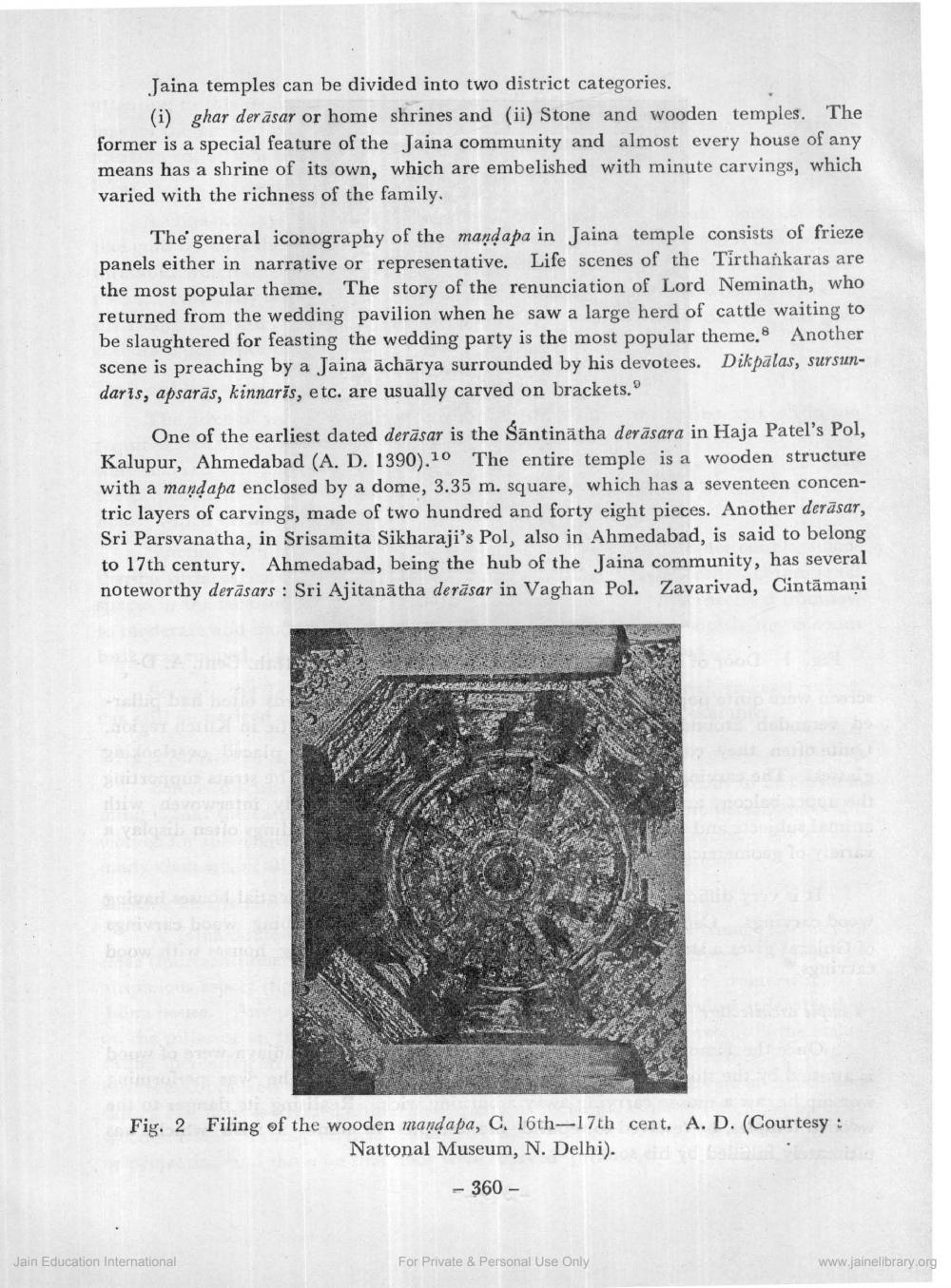Book Title: Jain Wood Carvings Author(s): V P Dwivedi Publisher: Z_Kailashchandra_Shastri_Abhinandan_Granth_012048.pdf View full book textPage 4
________________ Jaina temples can be divided into two district categories. (i) ghar derāsar or home shrines and (ii) Stone and wooden temples. The former is a special feature of the Jaina community and almost every house of any means has a shrine of its own, which are embelished with minute carvings, which varied with the richness of the family, The'general iconography of the mandapa in Jaina temple consists of frieze panels either in narrative or representative. Life scenes of the Tirthankaras are the most popular theme. The story of the renunciation of Lord Neminath, who returned from the wedding pavilion when he saw a large herd of cattle waiting to be slaughtered for feasting the wedding party is the most popular theme. Another scene is preaching by a Jaina āchārya surrounded by his devotees. Dikpalas, sursundaris, apsarās, kinnarīs, etc. are usually carved on brackets. One of the earliest dated derāsar is the Säntinātha derāsara in Haja Patel's Pol, Kalupur, Ahmedabad (A. D. 1390).10 The entire temple is a wooden structure with a mandapa enclosed by a dome, 3.35 m. square, which has a seventeen concentric layers of carvings, made of two hundred and forty eight pieces. Another derāsar, Sri Parsvanatha, in Srisamita Sikharaji's Pol, also in Ahmedabad, is said to belong to 17th century. Ahmedabad, being the hub of the Jaina community, has several noteworthy derāsars : Sri Ajitanātha derāsar in Vaghan Pol. Zavarivad, Cintāmaņi Fig. 2 Filing of the wooden mandapa, C. 16th-17th cent. A. D. (Courtesy : Nattonal Museum, N. Delhi). - 360 - Jain Education International For Private & Personal Use Only www.jainelibrary.orgPage Navigation
1 2 3 4 5 6 7 8
